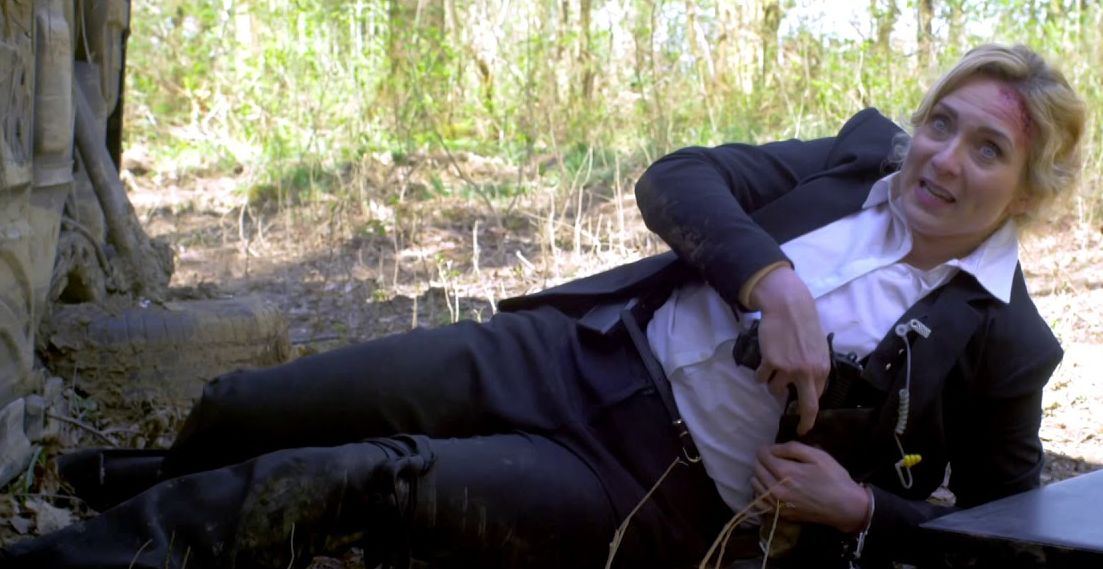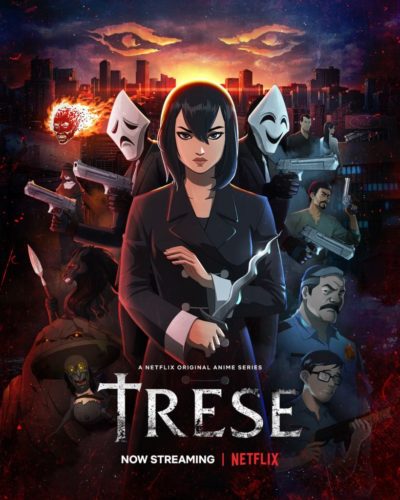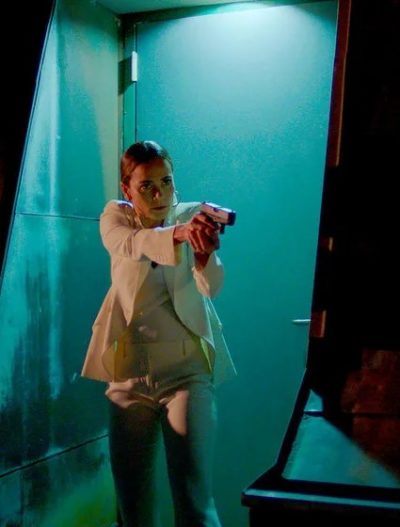★★★★
“Highly af-fjord-able.”

 This chilly slice of Swedish survival thriller is the perfect film to watch during an Arizona summer. For it does an excellent job of capturing the cold world of a Scandinavian winter, where diving into fjords is, apparently, a credible leisure pursuit. While offering a viable alternative to air-conditioning, it has to be admitted Chris turned to me at one point to say, “So why do people do this, exactly?” It’s a fair question, and one this film doesn’t even attempt to answer. There’s no sense of beauty here. You are voluntarily entering an environment where, if the lack of oxygen doesn’t get you, the cold might. Or perhaps other inhabitants. I mean, they are called “killer whales” for a reason, y’know.
This chilly slice of Swedish survival thriller is the perfect film to watch during an Arizona summer. For it does an excellent job of capturing the cold world of a Scandinavian winter, where diving into fjords is, apparently, a credible leisure pursuit. While offering a viable alternative to air-conditioning, it has to be admitted Chris turned to me at one point to say, “So why do people do this, exactly?” It’s a fair question, and one this film doesn’t even attempt to answer. There’s no sense of beauty here. You are voluntarily entering an environment where, if the lack of oxygen doesn’t get you, the cold might. Or perhaps other inhabitants. I mean, they are called “killer whales” for a reason, y’know.
If you ever had such an interest, this film might do for it, what Deliverance did for canoeing holidays. The story is about half-sisters Ida (Gammel) and Tuva (Martin), who separated after their parents divorced, but have now re-united. Both have issues. Ida’s marriage is crumbling, while professional diver Tuva just escaped being turned into chopped liver by a ship’s giant propeller. This get-together is supposed to involve them diving with their mother (Wiggen), but her illness makes it a two-woman trip. There is also history here; things open with a flashback to a childhood incident where Ida’s inattention almost cost Tuva her life. When an underwater rock fall traps Tuva, it’s entirely up to Ida to find some means of rescuing her sister from the freezing, suffocating depths.
It’s an exercise in contrast between the siblings. Tuva is remarkably calm, considering her circumstances, while Ida falls apart at the slightest problem. Had their roles been reversed, this would have been over in about 15 minutes. But as is, Ida has to deal with an almost unending series of issues. At times it feels like a particularly fiendish adventure game. Find the tool to open the car boot to get the other tool to lift the boulder and rescue the princess. There are some plot holes. For example when she can’t find the boot release, why not ask Tuva where it is? But it’s fair to imagine she may simply not have thought of it, in her harried state.
Similarly, I was a little disappointed the orcas didn’t play a bigger part, especially after Ida becomes a bit… bleedy. I do feel that this goes against the famous rule of Chekhov’s Cetaceans. “If, in the first act, you have carnivorous aquatic mammals hanging about, then in the second or third act, they must attack.” But the pace is so gloriously relentless, you don’t have the chance to dwell on such things. Hedén does an excellent job of ratcheting up the tension, and I found I spent most of the second half holding my breath. Or feeling cold. That too. While you could criticize Ida’s near-hysteria (probably a factor in her failing marriage), I can’t say I’d be any better, and you can only admire her tenacity and loyalty to Tuva. Just don’t expect us to don scuba gear soon.
Dir: Joachim Hedén
Star: Moa Gammel, Madeleine Martin, Trine Wiggen
























 This is definitely not your typical action heroine. For it’s Mary’s (Hochschild) 60th birthday when the events of this film unfold. She runs a long-running strip club on the titular location, when Duke (Smith) spoils the party, by demanding she hand over ownership of the establishment, to settle a loan taken out decades earlier. Mary isn’t having any of it, and when Duke’s lackie Punk Rock Charlie (Berkowitz) shows up to take over, she beats him up and leaves him for dead in the Bronson Caves – which, as the film helpfully tells us, was used as the Batcave for the Batman TV series. But Duke is ahead of her, and has kidnapped Mary’s son. To free him, he demands she do another job: kill an accountant who is being too talkative for Duke’s liking.
This is definitely not your typical action heroine. For it’s Mary’s (Hochschild) 60th birthday when the events of this film unfold. She runs a long-running strip club on the titular location, when Duke (Smith) spoils the party, by demanding she hand over ownership of the establishment, to settle a loan taken out decades earlier. Mary isn’t having any of it, and when Duke’s lackie Punk Rock Charlie (Berkowitz) shows up to take over, she beats him up and leaves him for dead in the Bronson Caves – which, as the film helpfully tells us, was used as the Batcave for the Batman TV series. But Duke is ahead of her, and has kidnapped Mary’s son. To free him, he demands she do another job: kill an accountant who is being too talkative for Duke’s liking. 




